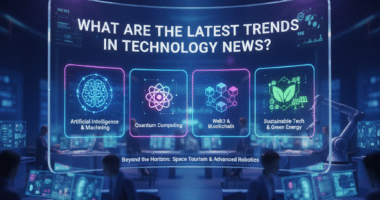Tesla’s Optimus Robot Hints at Surgical Automation: Is the Future of Healthcare Here?
Introduction: Robotics Meet Healthcare
Tesla’s Optimus robot is making headlines once again — but this time, it’s not just about factory floors or household chores. According to Elon Musk, the Optimus project is heading toward a future where robots are incredible surgeons, spearheading a revolution in surgical automation that could redefine healthcare globally.timesofindia.indiatimes+1
What Is Tesla’s Optimus and Why the Buzz?
Tesla’s Optimus is a humanoid robot designed to mimic basic human motions and carry out repetitive or hazardous tasks. Recently, Musk announced ambitious plans to equip Optimus with advanced AI, neural networks, and motion control so it can perform delicate medical operations. The goal: robots that rival or even surpass human surgeons in accuracy, consistency, and skill.instagram+1
The latest generation — Optimus Gen 3 — boasts impressive 22-degree hand dexterity, AI-powered “vision,” and teleoperation via VR headset, allowing for remote assistance in complex environments like operating rooms or senior care.ainvest
Unpacking the Promise: From Factory Floors to Surgery Suites
h3: Technical Advancements Driving Surgical Automation
Tesla’s custom servo motors offer remarkable precision, achieving 0.05-degree accuracy and lightning-fast response times. While Optimus has already mastered object manipulation and basic “service” tasks, it’s the leap to surgical applications that’s igniting excitement. The robot can be trained with reinforcement learning, using real-world data from Tesla’s factories to transfer fine motor skills to medical tools.indiatoday+1
h3: Real Healthcare Impacts
Optimus could help lift, reposition, and support patients, offer medication reminders, and even aid in remote health monitoring. But the long-term vision goes much further: robots performing actual surgical procedures, potentially democratizing access to world-class surgical care, especially in rural or underserved areas.forklog+1
Challenges Ahead: Is Robotic Surgery Ready?
The current iteration of Optimus still lacks the finesse of specialized surgical systems, such as the da Vinci Surgical System, but rapid technical advancements are underway. Major hurdles include handling unstructured surgical environments, guaranteeing patient safety, and meeting strict regulatory requirements. Successful rollout will also require years of clinical trials, careful ethical oversight, and robust AI validation.ainvest+1
Musk’s Vision: Market Impact and Ethical Questions
Elon Musk projects that robotics, especially with applications like healthcare, could account for up to 80% of Tesla’s future value. With the global surgical robotics market projected to grow to $15 billion by 2030, the stakes are high. However, skeptics warn of production delays, technical risks, and profound ethical debates over job displacement and empathy loss in care.forklog+1
Conclusion: Are We There Yet?
Tesla’s drive to automate surgery with the Optimus robot promises radical shifts in how we think about medical care. With breakthrough dexterity, rapid hardware improvements, and Musk’s relentless optimism, the dream of surgical automation edges closer to reality. But significant barriers remain before robots routinely perform surgery in hospitals.
For now, Tesla’s Optimus hints at an automated surgical future — not as a replacement for human doctors, but as a dramatic augmentation to healthcare teams. Healthcare professionals and patients alike will be watching closely as practical, ethical, and technical issues unfold in the coming years.










7 comments
Thank a lot
Yeah.
Good night 😴
Tesla aims for robot surgeon who can perform delicate operations. Who is going to be responsible when getting sued with note record by shadow’s writer. Robot? Or Interventionist?
Ha Ha
Done
Amazing